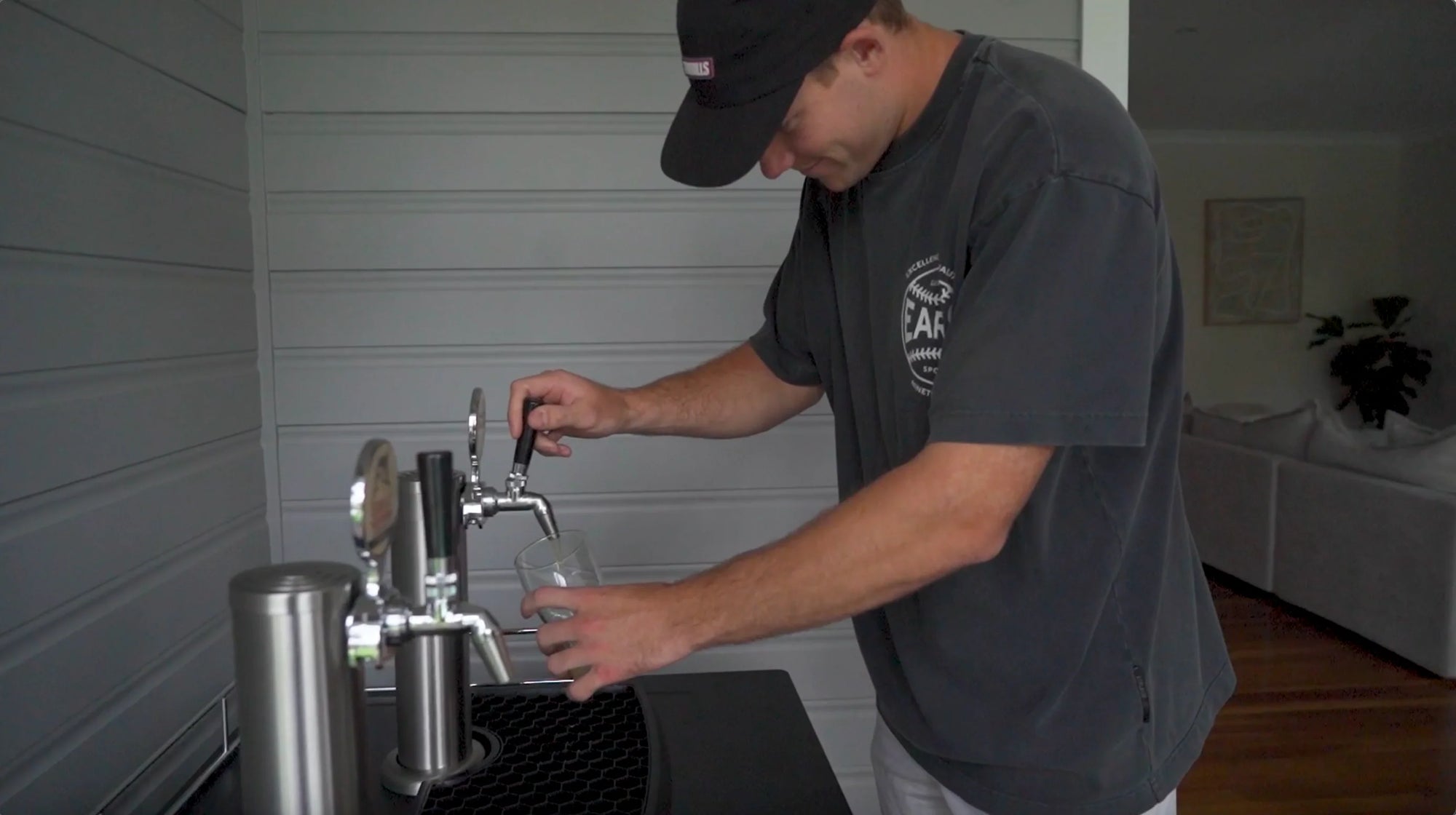Introduction
G’day fellas! And welcome to the ultimate guide on how a kegerator works! Ever wondered how you can have a pub-like experience in your very own man cave? Look no further, as we break down the magic behind this beer-dispensing wonder known as the kegerator. Let's dive into the world of draft beer and uncover the secrets that make it a must-have for every true beer enthusiast.
What is a Kegerator?
Before we jump into the nitty-gritty, let's understand what a kegerator actually is. In simple terms, it's a fridge specifically designed to store and dispense kegs of beer. This ingenious invention brings the joy of freshly poured draught-beer right into your home or man cave, ensuring you never run dry when it's time to unwind with your brews.
Brief History of Kegerators
You might be curious about the origins of this beer-dispensing marvel. Well, kegerators have been around for quite a while. The concept first emerged in the 1950s when beer lovers sought a way to keep their precious brews cold and fresh without the hassle of bottles or cans. Fast forward to today, and the kegerator has evolved into a sought-after staple in man caves and home bars across the world.
Why are Kegerators Popular?
Now, you might be wondering why kegerators have gained such popularity among blokes like us. The answer is simple—draught beer straight from the tap! There's something special about savouring a perfectly poured pint with a frothy head, just like at your local pub. Plus, with the convenience of a kegerator, you can enjoy your favourite beers anytime without running to the bottle shop.
Understanding the Basics of a Kegerator
Definition and Components of a Kegerator
So, what makes up a kegerator? It's not just a regular fridge, that's for sure. A typical kegerator consists of:
- A cooling system, including a compressor to keep the beer chilled.
- A CO2 tank and regulator to carbonate and dispense the beer.
- Beer lines, font and taps to deliver that smooth, cold goodness to your glass.
Different Types of Kegerators
You'll find two main types of kegerators in the market:
- Residential Kegerators: Designed for home use, these are perfect for your man cave or home bar. They come in various sizes to fit your space and accommodate different keg configurations.
- Commercial Kegerators: These beasts are for pubs and bars, catering to larger volumes of beer. If you're running a business, this is your go-to kegerator.
Key Features of a Kegerator
A kegerator comes packed with features that elevate your beer-drinking experience:
- Temperature Control: Ensures your beer stays at the perfect temperature for maximum enjoyment.
- CO2 Regulator: Lets you control the carbonation level of your beer, just the way you like it.
- Taps and Handles: For that authentic pub feel and easy beer dispensing.
- Drip Tray: No mess, no fuss—catches any spills or drips.
How Does a Kegerator Work?
Overview of the Kegerator System
Time to uncover the magic behind a kegerator's operation. Let's break it down step by step:
- Cooling the Keg: The compressor and cooling system work their magic to keep your beer perfectly chilled at the right temperature.
- Regulating the Pressure: The CO2 tank and regulator kick in to carbonate the beer and maintain the right pressure to push it through the beer lines.
- Dispensing the Beer: With a gentle pull of the tap, the beer flows through the beer lines and into your glass, ready to enjoy.
Importance of Temperature and Pressure Control
Now, you might wonder why temperature and pressure are such a big deal. Well, these factors significantly impact the taste and quality of your beer. Proper temperature and pressure ensure that your beer stays fresh, flavorful, and free from any unwanted foaming or fizz.
Components of a Kegerator
A. Compressor and Cooling System
The compressor is the heart of a kegerator's cooling system. It chills the keg, keeping your beer at the optimal temperature for that crisp and refreshing taste.
- Types of Cooling Systems: Some kegerators use a direct-draw cooling system, while others opt for air-cooled systems. Both work efficiently, but air-cooled systems might be more energy-efficient for long-term use.
B. CO2 Tank and Regulator
The CO2 tank and regulator work together to carbonate your beer and dispense it with just the right amount of fizz.
- Carbonating and Dispensing Beer: The CO2 tank contains pressurised carbon dioxide, which infuses the beer with bubbles and helps it flow smoothly from the tap.
- Regulator Settings: By adjusting the regulator, you can control the pressure and carbonation level, ensuring your beer is just the way you like it.
C. Beer Lines and Taps
These components are responsible for delivering your beer from the keg to your glass, making them essential for that perfect pour.
- Function of Beer Lines and Taps: The beer lines transport the beer from the keg to the tap, where it flows out at your command.
- Types of Beer Lines: There are various types of beer lines, each with specific features to suit your kegerator needs.
Setting Up a Kegerator
Choosing the Right Location
Finding the perfect spot for your kegerator is essential for optimal performance and convenience.
- Proper Ventilation: Ensure proper airflow around the kegerator to prevent overheating.
- Installation Process: Follow the manufacturer's instructions for a smooth setup and hassle-free experience.
- Cleaning and Sanitizing: Before use, clean and sanitise your kegerator to ensure your beer stays fresh and free from any unwanted flavours.
Maintaining and Troubleshooting a Kegerator
A. Cleaning and Maintenance
To keep your kegerator running smoothly and your beer tasting great, regular cleaning and maintenance are crucial.
- Cleaning Beer Lines and Taps: Regularly clean and maintain these components to avoid any clogs or off-flavours.
- Preventing Mould and Bacteria: A clean kegerator means no worries about unwanted guests growing in your precious beer.
B. Troubleshooting Common Issues
Sometimes, things might not go as smoothly as we'd like. Here are some common kegerator issues and their solutions:
- Foamy Beer: Adjust the pressure and temperature to prevent excessive foaming.
- Leaks: Check for any loose connections or damaged seals and fix them as needed.
- Temperature Inconsistencies: Ensure the kegerator is properly insulated and the thermostat is working correctly.
Tips for Optimising Your Kegerator Experience
Choosing the Right Kegs and Beer Styles
Selecting the right kegs and beer styles is essential to enjoy a variety of flavours and experiences.
- Storing and Serving Beer: Keep your beer in prime condition by storing it properly and serving it at the right temperature.
- Upgrading and Customising: Personalise your kegerator with add



